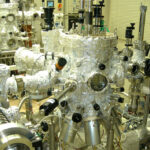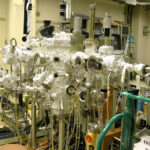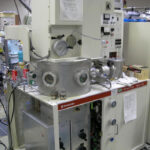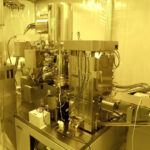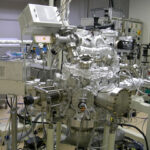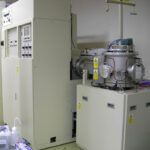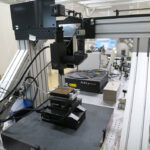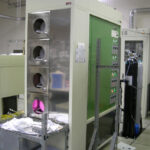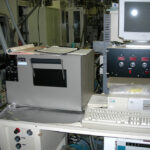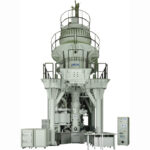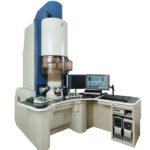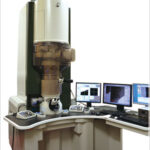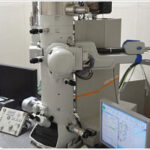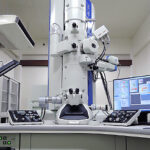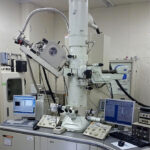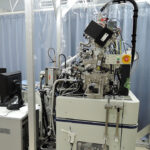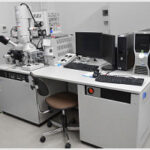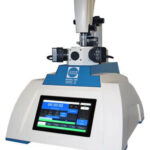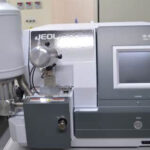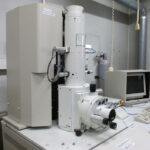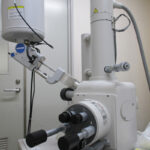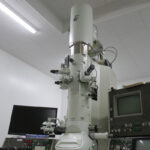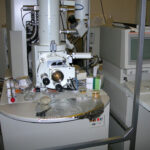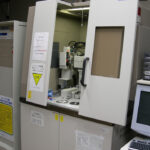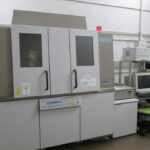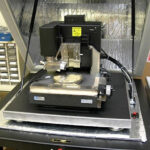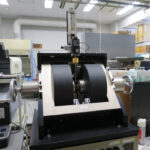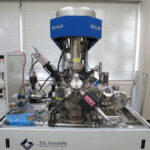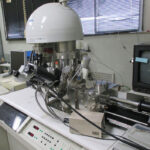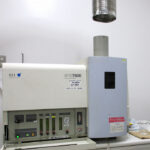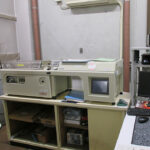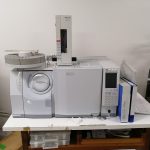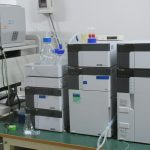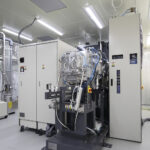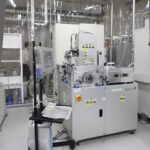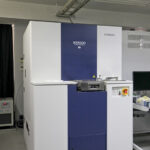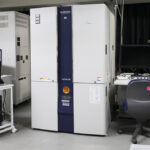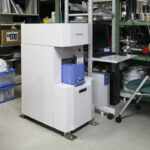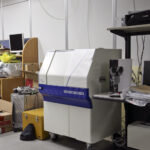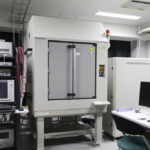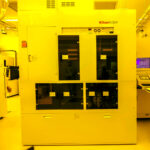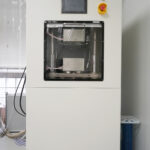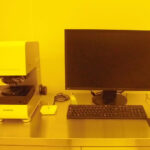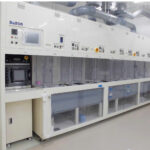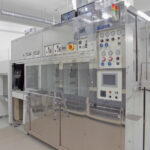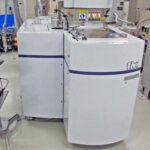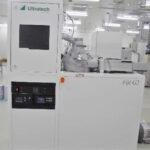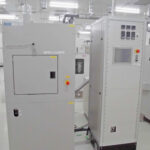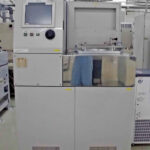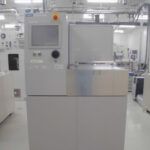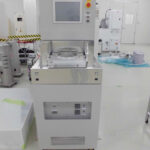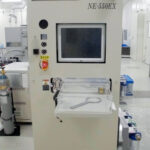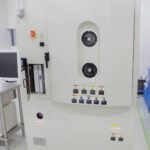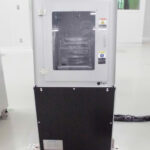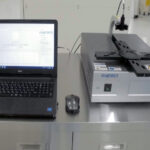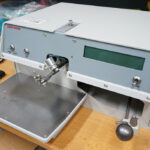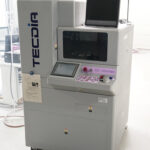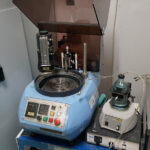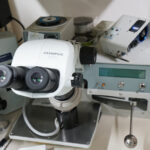Joint Usage / Research Center
Summary and Call for Proposals
Image of Shared Use
-
Academics or research teams of the IMaSS including
researchers from other institutes/universities.Nagoya University researchers

Researchers from other universities(research representatives)
▼
Joint research by utilizing the facilities, equipment, data and other items of the IMaSS.
Wide range of research from fundamental research on advanced materials and devices to
systems engineering for their social implementation.▼
Realization of the development of environment-friendly and sustainable energy-saving and energy-creating technologies
(energy conversion, energy storage, energy transmission, and sophisticated and ultraefficient energy consumption).
Summary and Call for Proposals
Joint Usage/Research Center of energy-friendly and sustainable energy-saving and energy-creating materials and systems research
IMaSS has been newly certified as a "Joint Usage/Research Center of energy-friendly and sustainable energysaving and energy-creating materials and systems research" by the Ministry of Education, Culture, Sports, Science and Technology for 6 years from FY2022, and it is aimed at realizing the development of environmentfriendly and sustainable energy-saving and energy-creating technologies (energy conversion, energy storage, energy transmission, and sophisticated and ultraefficient energy consumption). To realize the development of energy-saving and energy-creating technologies, the center further promotes energy-saving and energy-creating technologies through joint usage/joint research by domestic and oversea researchers. At this facility, researchers from universities, research institutions and other organizations based in Japan and abroad can engage in joint research together with IMaSS personnel while utilizing a wide range of equipment including film-deposition systems, micro/nanofabrication equipment, electron microscopes and many other types of analysis instruments.
If you wish to apply for joint usage or research at this facility, please consult the IMaSS staff in advance and apply.
Call for “IMaSS joint usage/joint research program” in FY2025
Application Deadline: January 15, 2025 (Wednesday)
Reports Deadline: March 2, 2026 (Monday)
The Institute of Materials and Systems for Sustainability, Nagoya University (hereinafter referred to as IMaSS) was established on October 1, 2015 by reorganizing the Ecotopia Science Institute which was the only science and engineering institute attached to Nagoya University. The purpose of establishing this institute is to contribute to the realization of an environment-friendly and sustainable society by engaging in research on new materials and systems.
Since 2016, IMaSS had been certified as a joint usage/joint research center of materials and systems for innovative energy management by the Ministry of Education, Culture, Sports, Science and Technology. To realize innovative energy management (involving energy creation/conversion, storage, transmission, advanced consumption, and ultraefficiency), the center has consistently taken a bird's-eye view from basic research on elemental technologies, such as cutting-edge materials and devices to system technologies, for social implementation and has been promoting the development of innovative energy management technology through joint usage/joint research with domestic and overseas researchers.
From FY2022, the center has been newly certified as a "Center of joint usage/joint research on energy-friendly and sustainable energy-saving and energy-creating materials and systems research" by the Ministry of Education, Culture, Sports, Science and Technology, and it is aimed at realizing the development of environment-friendly and sustainable energy-saving and energy-creating technologies (energy conversion, energy storage, energy transmission, and sophisticated and ultraefficient energy consumption). To realize the development of energy-saving and energy-creating technologies, the center further promotes energy-saving and energy-creating technologies through joint usage/joint research by domestic and oversea researchers.
As part of the activities of this center, the development, joint usage, and joint research of environment-friendly and sustainable energy-saving and energy-creating technologies are carried out in cooperation with faculty members belonging to IMaSS.
| Joint usage/joint research | A research team including faculty members of this institute and faculty members or researchers belonging to institutions other than this institute (for the research team, refer to "2. Qualified applicants") uses, among others, the facilities, equipment, and data of this institute. |
|---|---|
| Joint usage/joint research subject | Joint usage/joint research on environment-friendly and sustainable energy-saving and energy-creating technologies (energy conversion, energy storage, energy transmission, and sophisticated and ultraefficient energy consumption). |
| Qualified applicant | Principal Investigator (PI) PI must meet one of the following requirements. (i) Researcher belonging to national, public or private university or research institute, or similar researcher; (ii) Researcher approved by the director of IMaSS. Co-investigator (Co-I) Co-I must meet one of the following requirements; (i) Researchers belonging to national, public or private university or research institute, or similar researcher; (ii) Technical staff and graduate student; (iii) Researcher approved by the director of IMaSS. |
| Research period | The research period is from the date of adoption until the end of February 2026. Applications for the continuation of the same research project can be made up to three times, including the first application. |
| Application procedure/Submission address/Miscellaneous | Please refer to the "Application Guideline (PDF)" below. |
| Application Submission deadline | January 15, 2025 (Wednesday) |
| The deadline for submitting research reports | March 2, 2026 (Monday) |
Call for “IMaSS joint usage/joint research program (international collaboration)” in FY2025
Application Deadline: January 15, 2025 (Wednesday)
Reports Deadline: March 1, 2027 (Monday)
Institute of Materials and Systems for Sustainability, Nagoya University (hereinafter referred to as IMaSS) was established on October 1, 2015 by reorganizing the Ecotopia Science Institute, which was the only science and engineering institute attached to Nagoya University. The purpose of establishing this institute is to contribute to the realization of an environment-friendly and sustainable society by engaging in research on new materials and systems.
Since 2016, IMaSS had been certified as a joint usage/joint research center of materials and systems for innovative energy management by the Ministry of Education, Culture, Sports, Science and Technology. To realize innovative energy management (involving energy creation/conversion, storage, transmission, advanced consumption, and ultraefficiency), the center has consistently taken a bird's-eye view from basic research on elemental technologies, such as cutting-edge materials and devices to system technologies, for social implementation and has been promoting the development of innovative energy management technology through joint usage/joint research with domestic and overseas researchers.
From FY2022, the center has been newly certified as a center of "joint usage/joint research on energy-friendly and sustainable energy-saving and energy-creating materials and systems research" by the Ministry of Education, Culture, Sports, Science and Technology, and it is aimed at realizing the development of environment-friendly and sustainable energy-saving and energy-creating technologies (energy conversion, energy storage, energy transmission, and sophisticated and ultraefficient energy consumption).To realize the development of energy-saving and energy-creating technologies, the center further promotes energy-saving and energy-creating technologies through joint usage/joint research by domestic and oversea researchers.
As part of the activities of the center, the center calls for research proposals joint usage/joint research※ for the development of environment-friendly and sustainable energy-saving and energy-creating technologies, to be carried out in cooperation with faculty members belonging to IMaSS.
| Joint usage/joint research | Joint usage/joint research is research conducted jointly by research teams including faculty members of IMaSS and outside of IMaSS, using,among other, the facilities, equipment, and data of IMaSS. |
|---|---|
| Joint usage/joint research subject | Joint usage/joint research on environment-friendly and sustainable energy-saving and energy-creating technologies (energy conversion, energy storage, energy transmission, and sophisticated and ultraefficient energy consumption). |
| Project Members | In this international joint research, the project members must include at least one researcher based overseas as the principal investigator or co-researcher. Additionally, the project members must include at least one IMaSS staff member as the corresponding researcher in IMaSS. Please have sufficient discussions in advance with the corresponding researcher in IMaSS regarding the research subject, contents, and expenditure, etc. The principal investigator and co-investigator must meet one of the following requirements (excluding faculty members of NU): (i) researcher belonging to national, public or private university or research institute, or similar researcher; (ii) researcher belonging to overseas research institute (including emeritus professor and postdoc, holding a doctoral degree); (iii) researchers approved by the director of IMaSS. |
| Research period | The research period is two years from the date of adoption until the end of February 2027. However, the research period for continuing applications will be one year. |
| Application procedure/Submission address/Miscellaneous | Please refer to the "Application Guideline (PDF)" below. |
| Application Submission deadline | January 15, 2025 (Wednesday) |
| The deadline for submitting research reports | March 1, 2027 (Monday) |
Call for “IMaSS joint usage/joint research program” in FY2024
Application Deadline: January 15, 2024 (Monday) *Application Registration is now closed.
Reports Deadline: March 3, 2025 (Monday)
The Institute of Materials and Systems for Sustainability, Nagoya University (hereinafter referred to as IMaSS) was established on October 1, 2015 by reorganizing the Ecotopia Science Institute which was the only science and engineering institute attached to Nagoya University. The purpose of establishing this institute is to contribute to the realization of an environment-friendly and sustainable society by engaging in research on new materials and systems.
Since 2016, IMaSS had been certified as a joint usage/joint research center of materials and systems for innovative energy management by the Ministry of Education, Culture, Sports, Science and Technology. To realize innovative energy management (involving energy creation/conversion, storage, transmission, advanced consumption, and ultraefficiency), the center has consistently taken a bird's-eye view from basic research on elemental technologies, such as cutting-edge materials and devices to system technologies, for social implementation and has been promoting the development of innovative energy management technology through joint usage/joint research with domestic and overseas researchers.
From FY2022, the center has been newly certified as a "Center of joint usage/joint research on energy-friendly and sustainable energy-saving and energy-creating materials and systems research" by the Ministry of Education, Culture, Sports, Science and Technology, and it is aimed at realizing the development of environment-friendly and sustainable energy-saving and energy-creating technologies (energy conversion, energy storage, energy transmission, and sophisticated and ultraefficient energy consumption). To realize the development of energy-saving and energy-creating technologies, the center further promotes energy-saving and energy-creating technologies through joint usage/joint research by domestic and oversea researchers.
As part of the activities of this center, the development, joint usage, and joint research of environment-friendly and sustainable energy-saving and energy-creating technologies are carried out in cooperation with faculty members belonging to IMaSS.
| Joint usage/joint research | A research team including faculty members of this institute and faculty members or researchers belonging to institutions other than this institute (for the research team, refer to "2. Qualified applicants") uses, among others, the facilities, equipment, and data of this institute. |
|---|---|
| Joint usage/joint research subject | Joint usage/joint research on environment-friendly and sustainable energy-saving and energy-creating technologies (energy conversion, energy storage, energy transmission, and sophisticated and ultraefficient energy consumption). |
| Qualified applicant | Principal Investigator (PI) PI must meet one of the following requirements. (i) Researcher belonging to national, public or private university or research institute, or similar researcher; (ii) Researcher approved by the director of IMaSS. Co-investigator (Co-I) Co-I must meet one of the following requirements; (i) Researchers belonging to national, public or private university or research institute, or similar researcher; (ii) Technical staff and graduate student; (iii) Researcher approved by the director of IMaSS. |
| Research period | The research period is from the date of adoption to February 28, 2025 (-Friday). Applications for the continuation of the same research project can be made up to three times, including the first application. In addition, from 2022, our institution has been renewed as the new "Research base for materials and systems for environmentally friendly and sustainable energy saving and energy creation". Therefore, we have treated all the projects adopted in 2022 as new projects. The number of continuations will start from 2022. |
| Application procedure/Submission address/Miscellaneous | Please refer to the "Application Guideline (PDF)" below. |
| Application Submission deadline | January 15, 2024 (Monday) |
| The deadline for submitting research reports | March 3, 2025 (Monday) |
Call for “IMaSS joint usage/joint research program (international collaboration)” in FY2024
Application Deadline: January 15, 2024 (Monday) *Application Registration is now closed.
Reports Deadline: March 2, 2026 (Monday)
Institute of Materials and Systems for Sustainability, Nagoya University (hereinafter referred to as IMaSS) was established on October 1, 2015 by reorganizing the Ecotopia Science Institute, which was the only science and engineering institute attached to Nagoya University. The purpose of establishing this institute is to contribute to the realization of an environment-friendly and sustainable society by engaging in research on new materials and systems.
Since 2016, IMaSS had been certified as a joint usage/joint research center of materials and systems for innovative energy management by the Ministry of Education, Culture, Sports, Science and Technology. To realize innovative energy management (involving energy creation/conversion, storage, transmission, advanced consumption, and ultraefficiency), the center has consistently taken a bird's-eye view from basic research on elemental technologies, such as cutting-edge materials and devices to system technologies, for social implementation and has been promoting the development of innovative energy management technology through joint usage/joint research with domestic and overseas researchers.
From FY2022, the center has been newly certified as a center of "joint usage/joint research on energy-friendly and sustainable energy-saving and energy-creating materials and systems research" by the Ministry of Education, Culture, Sports, Science and Technology, and it is aimed at realizing the development of environment-friendly and sustainable energy-saving and energy-creating technologies (energy conversion, energy storage, energy transmission, and sophisticated and ultraefficient energy consumption).To realize the development of energy-saving and energy-creating technologies, the center further promotes energy-saving and energy-creating technologies through joint usage/joint research by domestic and oversea researchers.
As part of the activities of the center, the center calls for research proposals joint usage/joint research※ for the development of environment-friendly and sustainable energy-saving and energy-creating technologies, to be carried out in cooperation with faculty members belonging to IMaSS.
| Joint usage/joint research | Joint usage/joint research is research conducted jointly by research teams including faculty members of IMaSS and outside of IMaSS, using,among other, the facilities, equipment, and data of IMaSS. |
|---|---|
| Joint usage/joint research subject | Joint usage/joint research on environment-friendly and sustainable energy-saving and energy-creating technologies (energy conversion, energy storage, energy transmission, and sophisticated and ultraefficient energy consumption). |
| Project Members | In this international joint research, the project members must include at least one researcher based overseas as the principal investigator or co-researcher. Additionally, the project members must include at least one IMaSS staff member as the corresponding researcher in IMaSS. Please have sufficient discussions in advance with the corresponding researcher in IMaSS regarding the research subject, contents, and expenditure, etc. The principal investigator and co-investigator must meet one of the following requirements (excluding faculty members of NU): (i) researcher belonging to national, public or private university or research institute, or similar researcher; (ii) researcher belonging to overseas research institute (including emeritus professor and postdoc, holding a doctoral degree); (iii) researchers approved by the director of IMaSS. |
| Research period | The research period is two years from the date of adoption to February 28, 2026 (Saturday). However, the research period for continuing applications will be one year. |
| Application procedure/Submission address/Miscellaneous | Please refer to the "Application Guideline (PDF)" below. |
| Application Submission deadline | January 15, 2024 (Monday) |
| The deadline for submitting research reports | March 2, 2026 (Monday) |
2023年度 名古屋大学未来材料・システム研究所共同利用・共同研究(国際共同研究)の公募について
※申請書の受付は終了しました
※報告書提出期限 2025年3月3日(月)
名古屋大学未来材料・システム研究所(以下「本研究所」という。)は、学内唯一の理工学系附置研究所であるエコトピア科学研究所を改組し、2015年10月1日に設置されました。本研究所は、新しい材料・システムの研究に取り組み、環境調和型持続可能社会の実現に寄与することを目的としています。
また、2016年度より6年間、共同利用・共同研究拠点として新たに文部科学省から認定された「革新的省エネルギーのための材料とシステム研究拠点」は、革新的省エネルギー(エネルギーの創出・変換、蓄積、伝送、消費の高度化・超効率化)を実現するために、先端的な材料・デバイス等の要素技術に関する基礎研究から社会実装のためのシステム技術までを一貫して俯瞰し、これを学内外・国内外の研究者の共同利用・共同研究によって推進してきました。
また、2022年度より6年間、共同利用・共同研究拠点として新たに文部科学省から認定された「環境調和型で持続発展可能な省エネルギー・創エネルギーのための材料とシステム研究拠点」は、環境調和型で持続発展可能な省エネルギー・創エネルギー技術(エネルギー変換、蓄エネルギー、エネルギー伝送およびエネルギー消費の高度化・超効率化)の開発を実現するために、先端的な材料・デバイス等の要素技術に関する基礎研究から社会実装のためのシステム技術の開発までを一貫して俯瞰し、これを学内外・国内外の研究者の共同利用・共同研究によって推進します。この拠点活動の一環として、海外を研究拠点とする研究者と本研究所の教員とが協力して行う、環境調和型で持続発展可能な省エネルギー・創エネルギー技術の開発に関する国際共同研究を公募します。
| 共同利用・共同研究 | 本研究所の教員及び本学以外の国外の研究機関に所属する教員又は研究者を含む研究チーム(研究チームは「研究組織」を参照)が、本研究所の施設、設備、データ等を利用して共同で行う研究 |
|---|---|
| 共同利用・共同研究課題 | 環境調和型で持続発展可能な省エネルギー・創エネルギー技術(エネルギー変換、蓄エネルギー、エネルギー伝送およびエネルギー消費の高度化・超効率化)に関する共同利用・共同研究課題 |
| 研究組織 | 本国際共同研究では、研究組織の中に、研究代表者もしくは研究分担者として海外を研究拠点とする研究者が一名以上含まれている必要があります。また、研究所担当教員として本研究所の所員が一名以上含まれている必要があります。研究課題、研究内容、経費等について事前に本研究所の担当教員と十分な打ち合わせをしてください。 研究代表者および研究分担者は、次のいずれかに該当する者とします。 ① 国、公、私立大学の教員、研究機関の研究者、又はこれに準ずる研究者 ② 国外の研究機関に所属する研究者(名誉教授、ポスドクを含む。博士の学位を有すること)。 ③ その他研究所長が特に適当と認めた者 |
| 研究期間 | 採択日から2025年2月28日(金)までの2年間とします。 ただし、2年目終了時に継続を希望する課題については、審査で継続が認められた場合、もう1年間継続することができます。継続が認められた課題には50万円を上限として予算の追加申請が可能です。 |
| 申請方法及び提出先 その他 | 下記「公募要項(PDF)」 を参照願います。 |
| 申請期限 | 2023年1月13日(金) 期限厳守 ※終了しました。 |
| 報告書提出期限 | 2025年3月3日(月)期限厳守 |
Facilities and Equipment
Coating Equipment
Microfabrication/Processing Device
Electronic Microscope & Associated Equipment
Analysis Measurement Equipment
Center for Integrated Research of Future Electronics / Center for Integrated Research of Future Electronics, Transformative Electronics Facilities
Please drop *'s before/after @ in sending e-mail.



